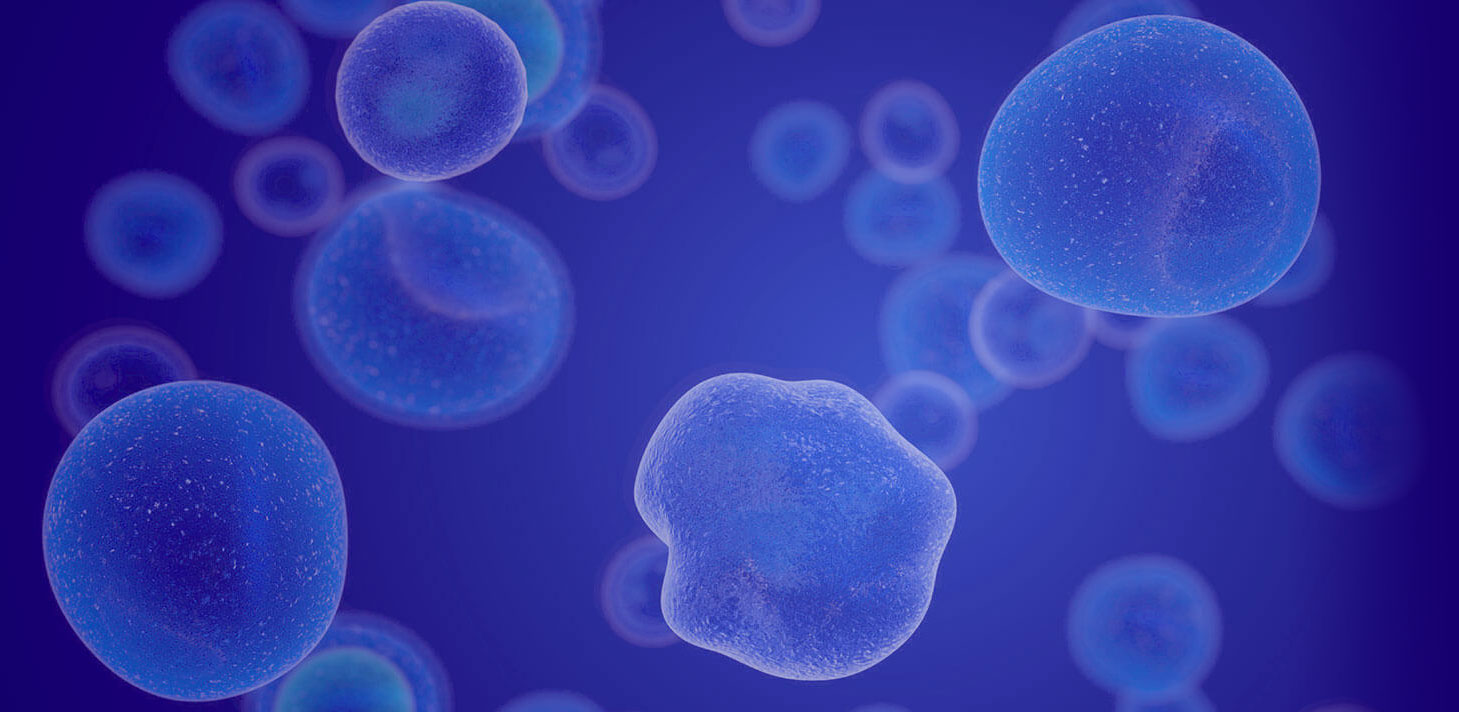Herniated Disc
Conveniently located to serve the areas of Greenville, SC, Spartanburg, SC, Columbia, SC, Anderson, SC and Asheville, NC

A herniated disc is among the most common causes of pain in the neck, back, and legs. The condition often heals naturally, but when it doesn’t it can cause years of discomfort and limit the activities one can partake in. It occurs when the soft inner core of a spinal disc bulges or ruptures through the outer layer, causing pain, numbness, and weakness. Traditional treatments for herniated discs, such as medication, physical therapy, and surgery, may not always offer satisfactory outcomes, however, there is another effective option for relief.
Stem cell therapy is a treatment option for herniated discs, addressing the root of the issue through regenerative healing. The procedure is simple and takes minutes to complete. When the stem cells enter the injured disc through injection, they kickstart a process of natural healing, repairing damaged tissue, and restoring spinal health.
At Daisy Stem Cell Therapy, Dr. John C. Haasis III provides expert stem cell therapy procedures for patients with a wide range of conditions and ailments. He is a pain management expert who has alleviated the symptoms of thousands of patients in the Carolinas. For more information, and to arrange a personal consultation to discuss your treatment further, call (864) 775-5682 or contact us online.
Contents
About Herniated Discs
A herniated disc is a spinal injury in which the round cushions between the vertebrae become damaged, usually in the form of a tear or a leak. Technically, herniated discs occur when the nucleus pulposus, the center of the disc, is agitated out of its place in the intervertebral space, the area directly between vertebrae. (1) A herniated disc can agitate spinal nerves, causing discomfort. Discs most often herniate near the neck or in the lower part of the spine.
Herniated discs can have many causes, though they typically come from old age, being overweight, repetitive bending or twisting motions of the spine, and traumatic strain from physical accidents. Traditionally, they are treated with anti-inflammatory medication, physical therapy, spinal injection of steroids, or spinal decompression surgery. These treatments can help to relieve the symptoms of a herniated disc, occasionally solving the problem, but they cannot approach the issue as organically as stem cell therapy.
Stem Cell Therapy for Herniated Discs
Stem cells are natural, undifferentiated biological cells that can turn into many different kinds of bodily cells in the process of human growth and development. They are a remarkable resource for regenerative medicine that can address many different conditions. Once inside the body, they can turn into particular cell types completely on their own. (2) By turning into the types of cells that occupy the area of treatment, they can help to repair and regenerate damaged tissue. This unique power makes stem cells a convenient treatment for herniated discs, a condition that is otherwise difficult to treat.
Stem cell therapy is a uniquely effective treatment for herniated discs because it addresses the problem at its cause, rather than merely alleviating symptoms. When we inject stem cells near the site of a herniated disc, they set off a chain reaction of healing responses. They acclimate to their new environment, causing the growth of healthy tissue and minimizing inflammation. On top of reducing the symptoms related to your herniated disc, they can improve your spinal health for long-term pain relief. Stem cells also have the potential to restore the mobility and function that you’ve lost as a result of your herniated disc.
Benefits of Stem Cell Therapy
Treating herniated discs with stem cell therapy offers numerous advantages, especially in comparison with traditional surgical procedures. It is a non-surgical procedure, meaning there are no incisions, no lengthy downtime for recovery, and no risks of surgery-related complications. Rather than manipulating the body directly with surgical intervention, stem cells naturally and gradually address symptoms by stimulating healing and regeneration naturally. This can lessen the likelihood of repeated disc herniation in the future. Stem cell therapy can put you on a fast track back to a pain-free and active lifestyle.
Who is a Candidate for Stem Cell Therapy?
A good candidate for stem cell therapy may have had little to no luck with more traditional treatments, or they don’t want to go with options that will merely alleviate their symptoms without solving the root of the problem. They may also want to forego invasive surgery that can cause complications or further injury.
To be considered eligible for stem cell therapy, you should be in relatively good health. If you have a serious ailment or you live a sedentary lifestyle, the stem cells may not be able to take hold in your body and make a meaningful difference. There are many related eligibility factors that we can discuss and work through at your consultation.
Personal Consultation
At your consultation, Dr. Haasis can determine the most effective treatment plan for your needs. He can answer any questions you have about stem cells, and tell you everything you should know about the treatments that we provide. Come prepared to answer questions about your medical history, including details about past conditions, medications, and surgeries. We may also run some tests to assess your condition and eligibility for treatment. At Daisy Stem Cell Therapy, providing satisfactory results for our patients is our goal and passion. To schedule your meeting with Dr. Haasis, call (864) 775-5682 or fill out this form.
Stem Cell Therapy Procedure
Dr. Haasis performs stem cell treatments for herniated discs on an outpatient basis. It is an extremely simple procedure with minimal risks compared to an invasive surgery with general anesthesia and incisions. When you arrive on the day of your procedure, we will administer local anesthesia to minimize any discomfort from the injections. Dr. Haasis will then inject the stem cells into your damaged disc in one short, hassle-free session.
Recovery
Recovery from stem cell therapy is relatively simple. You may experience some temporary soreness at your injection site. You may also have some mild swelling in your treatment area as the natural healing process begins. Beyond this, your recovery will likely be quick and painless. We recommend that our patients take a few days off to rest, though you can resume everyday activity when you feel ready.
Results
Because stem cell therapy is a treatment that stimulates improvement through natural healing, it can take up to several months before you begin to feel your results. It takes some time for the stem cells to incorporate themselves into their new environment and begin healing and regenerating disc tissue. Every patient’s body reacts to stem cells differently, so results may vary. Regardless of your stem cell therapy, traditional physical therapy will always be a crucial aspect of spinal health. If your stem cell treatment works as planned, you will experience profound relief from your pain.
How Much Does Stem Cell Therapy Cost in the Carolinas?
Every patient’s needs are different. At your personal consultation, we will work with you to create a personalized treatment plan that will allow us to give you an accurate cost estimate. To learn more about how much stem cell therapy costs at Daisy Stem Cell Therapy, call (864) 775-5682 or visit our contact page for more information.
FAQ
What are stem cells?
Stem cells are the body’s building blocks for growth and development. They can develop into many different cells with specialized functions. In the right context, they can be placed into the body, turn into the targeted type of cell, and divide to form more of the new type of cell. They can be used for therapeutic purposes in regenerative medicine, as well as for disease research.
How can stem cell therapy treat a herniated disc?
Herniated discs occur when the soft disc of tissue between spinal vertebrae breaks, either tearing or slipping out of place. When stem cells are introduced, they trigger a healing response that repairs and regenerates the damaged tissue. This treatment can restore the health and function of the spine, which is a remarkable step up from other treatments that simply reduce the symptoms of a herniated disc.
Are stem cell injections painful?
During the stem cell injection procedure, patients typically receive a local anesthetic to minimize discomfort. Some patients may experience mild soreness or discomfort at the injection site following the procedure, but this usually resolves within a few days. The overall level of pain during and after the stem cell injection for a herniated disc is generally low.
What is the success rate of stem cell therapy for a herniated disc?
The success rate of stem cell therapy for a herniated disc can vary depending on several factors, including the patient’s overall health, the extent of the herniation, and adherence to post-treatment care. While some patients may experience significant pain relief and functional improvement, others may have more modest results. It is important to have realistic expectations and consult with a qualified physician who can provide personalized insights based on your specific condition.
References
- Ruben Ngnitewe Massa, Mesfin FB. Disc Herniation. Nih.gov. Published October 27, 2018. https://www.ncbi.nlm.nih.gov/books/NBK441822/
- NIH. Stem Cell Basics | STEM Cell Information. stemcells.nih.gov. Published 2016. https://stemcells.nih.gov/info/basics/stc-basics/#stc-I


